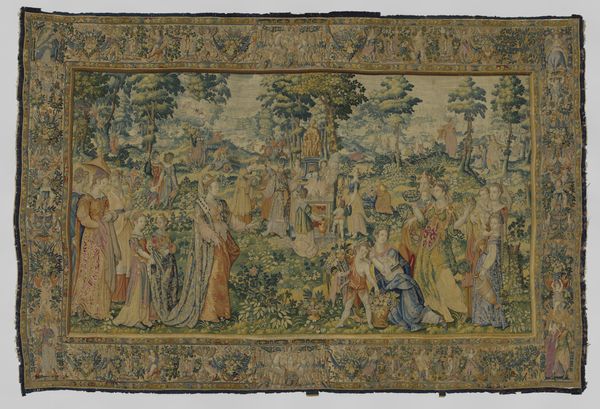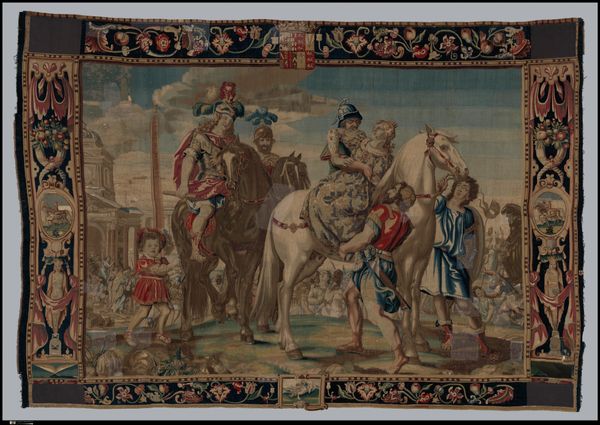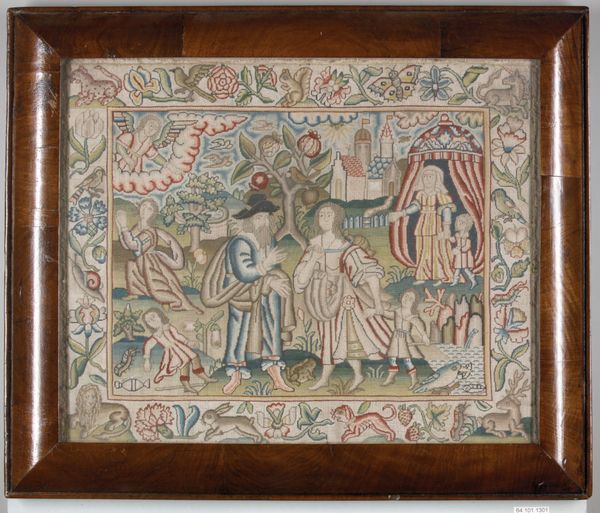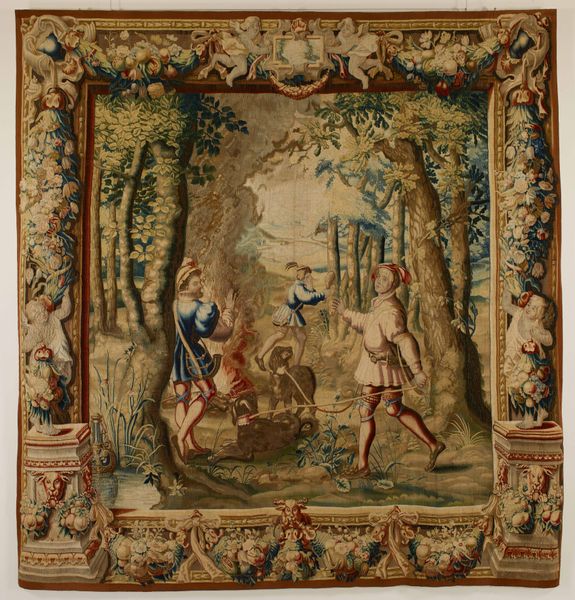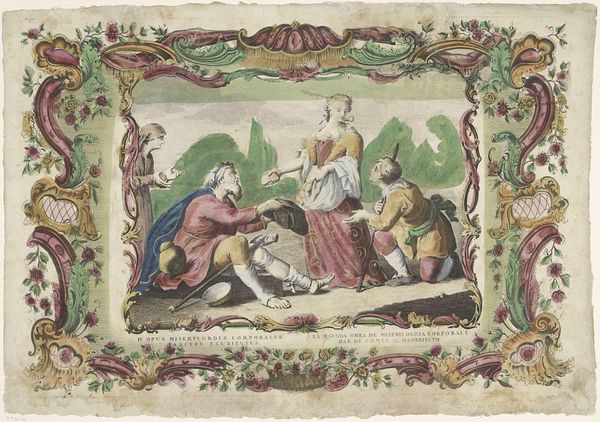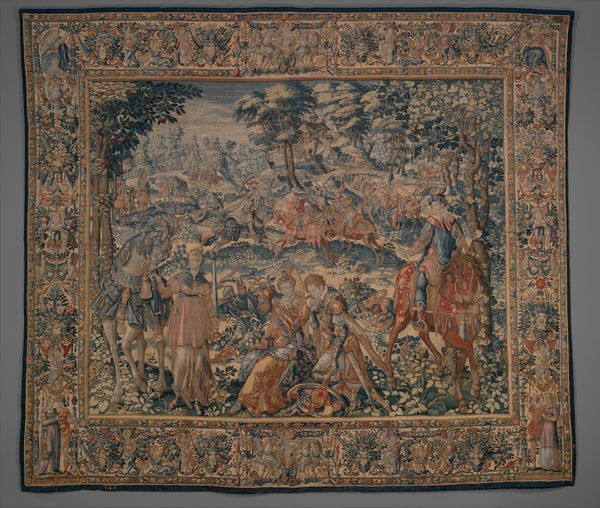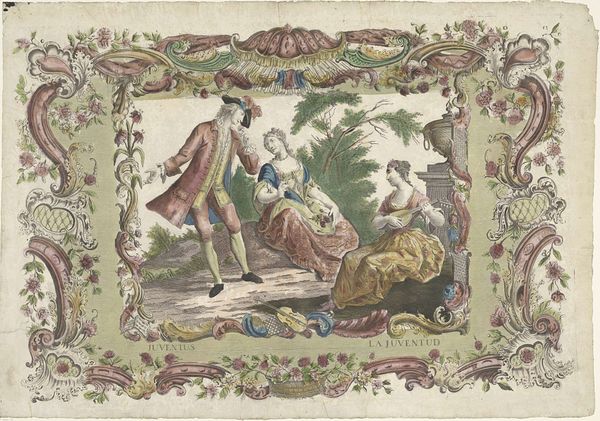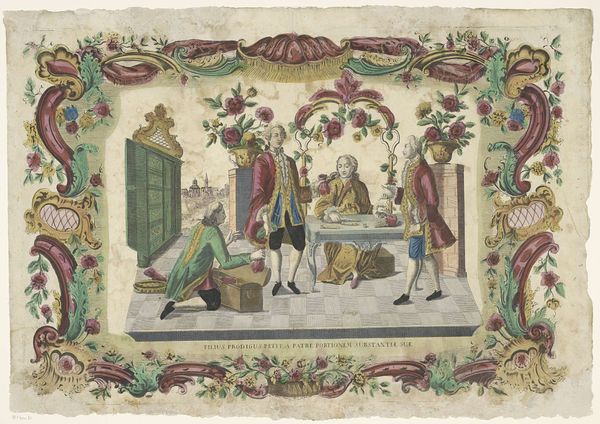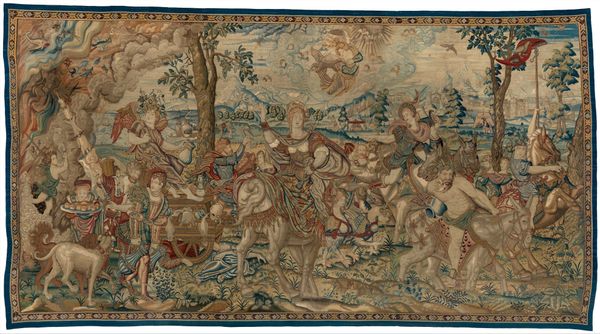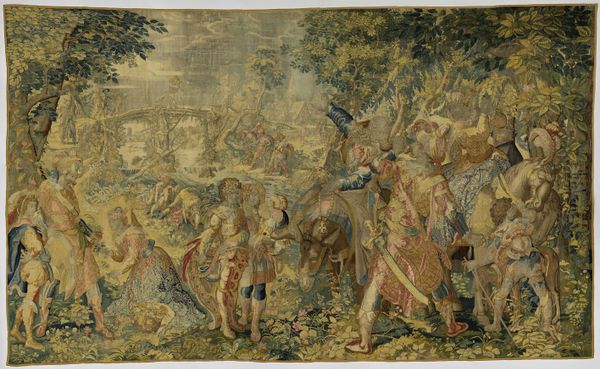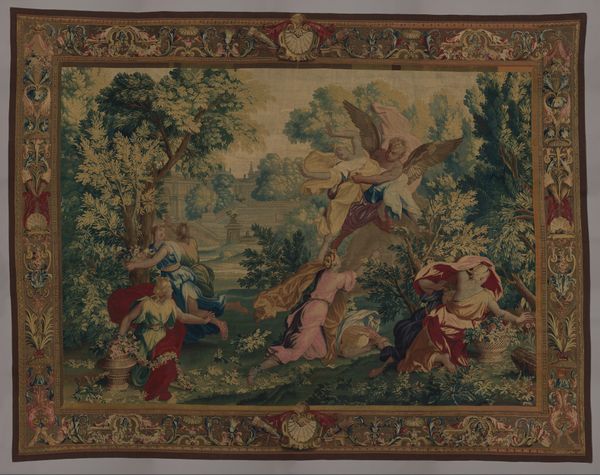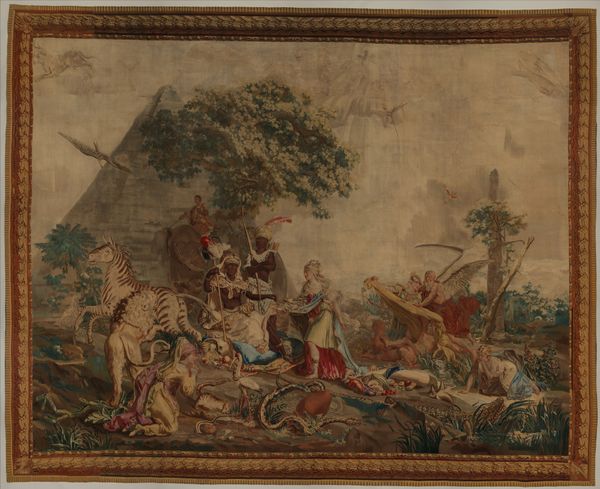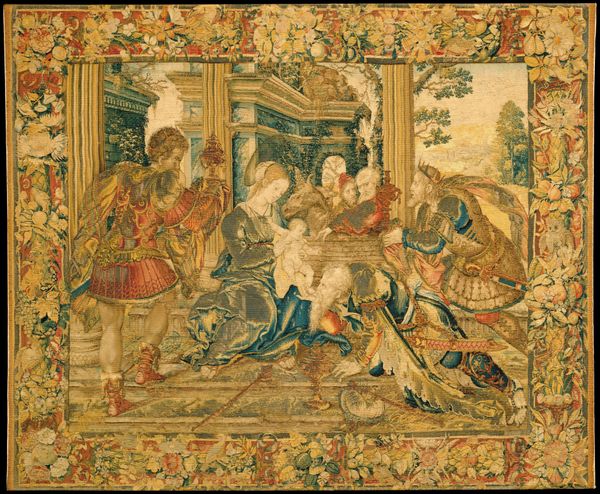
The Combat of Manricardo and Zerbino from a set illustrating Ariosto's Orlando Furioso 1630 - 1650
0:00
0:00
weaving, textile, sculpture
#
narrative-art
#
weaving
#
landscape
#
textile
#
figuration
#
11_renaissance
#
sculpture
#
horse
#
men
#
history-painting
#
decorative-art
Dimensions: H. 119 x W. 153 inches (302.3 x 388.6 cm)
Copyright: Public Domain
Editor: Here we have a woven tapestry, "The Combat of Manricardo and Zerbino from a set illustrating Ariosto's Orlando Furioso," made sometime between 1630 and 1650 by Raphaël de La Planche. It's such a dynamic scene, full of figures and horses, yet there’s something almost theatrical about it. What's your interpretation of this work? Curator: This tapestry offers a powerful glimpse into the visual culture of its time. While ostensibly depicting a chivalric romance, it's crucial to unpack the power dynamics inherent in these narratives. Notice the central female figure. Is she a damsel in distress, or does her positioning suggest a more active role within this conflict? The context of *Orlando Furioso* as a popular Renaissance epic is key here. Consider how the tapestry translates, and perhaps even subverts, the epic's themes of love, war, and madness through the lens of gender and class. Who would have commissioned such a piece, and what ideologies were they hoping to promote through its display? Editor: That’s fascinating. I hadn't really considered who it was for, but thinking about the patronage definitely changes the way I see it. It makes me question the idea of simple storytelling, as maybe there are agendas at work. Curator: Exactly! The decorative arts were rarely simply "decorative." Tapestries like this often served as potent signifiers of status and vehicles for disseminating particular social and political values. Think about the skilled labor involved in weaving such a piece; it highlights issues of class and access as well. By examining these elements, we can uncover the complex intersectional narratives woven into the fabric of this artwork. How does knowing this shift your perspective on the 'theatrical' quality you initially observed? Editor: It makes the performance seem even more calculated. Everything, even the landscape, seems to be performing a specific function for the audience and the patron. I am understanding tapestries differently now, as being cultural records that embody so many complexities. Curator: I agree. Art is so interesting as long as we continue to question it.
Comments
No comments
Be the first to comment and join the conversation on the ultimate creative platform.
